Sorted by date Results 51 - 75 of 103
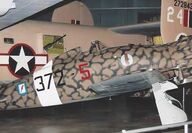
Founded in 1912 by Guilio Macchi to manufacture Nieuport aircraft, Macchi soon turned to building seaplanes designed by Mario Castoldi. The most famous were the Schneider Trophy racers, culminating in the MC.72 which still holds the piston-engined speed record for seaplanes. On 23 October 1934, Francesco Agello hit 440.681 mph behind the 3100 hp Fiat 24 cylinder liquid-cooled engine. First flying on 24 December 1937, the MC.200 fighter won the Regia Aeronautica interceptor contest of 1938.... Full story
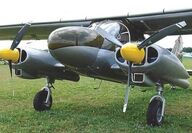
Professor Claude Dornier was known during World War I for his work with stressed skin Duralumin construction, designing large flying boats and other combat aircraft, including the experimental D-1 all metal single-seat fighter. Post-war he continued designs of all metal flying boats like the famous "Wal" series, production taking place in Italy, Spain, Switzerland, Sweden, and Japan to avoid the Versailles Treaty and Allied Control Commission. During World War II, Dornier production focused on t... Full story
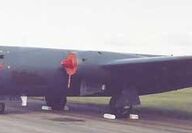
Designed by Teddy Petter, and first flown by Wing Commander Roland Beamont on 13 May 1949, the Rolls Royce Avon powered Canberra was the RAF's first jet bomber. Produced in the U.K. by English Electric, Avro, Handley Page, and Shorts and, like A84-229 in this Oshkosh 1991 photo, by the Australian Government Aircraft Factory at Fishermen's Bend, the Canberra and its American Wright J-65 engined Martin B-57 cousin, remained in military service until the last RAF PR. 9 was retired in July 2006.... Full story
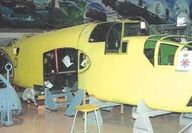
The Bolingbroke was a Canadian license production Bristol Blenheim. In an effort to build Canadian aircraft manufacturing capability, the RCAF chose the Bristol Model 149 for production by Fairchild Aircraft of Longueuil, Quebec. The initial contract was awarded in November 1937, and the first aircraft, RCAF 702, made its maiden flight on 14 September 1939, flown by J. H. "Red" Lymburner. Powered by two Bristol Mercury nine-cylinder radials and carrying a 1000 pound bomb load, the Bolingbroke... Full story
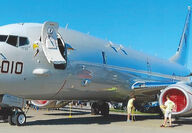
Maritime patrol aircraft evolved during WWI with Curtiss and Felixstowe flying boats scouring the North Sea and Mediterranean for German U-boats and commerce raiders. Land based bombers followed. The Catalina, Sunderland, Wellington, and Liberator served during WWII. World War II also saw the modification of airliners into land-based patrol aircraft. The Lockheed Model 14 Electra became the Model 414 Hudson and the Focke-Wulf FW-200 Condor became Churchill's "scourge of the Atlantic." Post war,... Full story
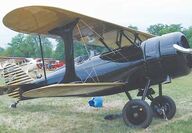
Emil Matthew "Matty" Laird (1896-1982) flew his first design on 15 September 1913. Built in his mother's attic, it got 10 feet into the air. Associated with Wichita and Chicago, Laird was famed for his custom-built sport and racing aircraft. Known initially for the Swallow biplane (about 43 built between 1920 and 1923), in 1924 he began design and manufacture of a series of Laird Commercials that sold well to "sportsman" pilots even during the Depression. Laird biplanes were part of the early da... Full story
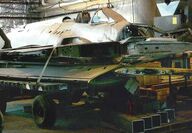
In 1946, the Army Air Force sent to industry a request for a "penetration" fighter able to escort bombers as well as perform ground attack. Three companies responded, McDonnell with the XF-88, North American with the YF-93 based on the F-86, and Lockheed with the XF-90. Of these, only the XF-88, modified to become the F-101 Voodoo, was produced. Lockheed received an AAF contract on 20 June 1946 for two prototypes, serials 46-687 and 46-688. Initially, Lockheed had proposed a delta wing, but... Full story
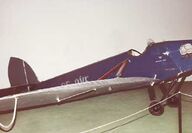
Ultra-light and light sport aircraft aren't new. Back in the early 1920's, The Daily Mail encouraged the design and manufacture of ultra light, inexpensive aircraft. One born of this competition was the DH. 53 Humming Bird. Originally fitted with a 750 cc Douglas motorcycle engine, the 524 pound Humming Bird debuted in October 1923. Later, powered with the 26 hp Blackbourne Tomtit and other engines, fifteen were produced, eight for the RAF. Three went to Australia, one to Russia, and one to... Full story
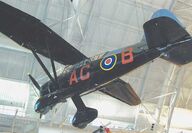
Although recognized as a maker of helicopters today, Westland started in the 19th century as a manufacturer of farm equipment. During WWI, Ernest Petter produced engines and airplanes at Westland Farm, the doors opening on 3 April 1915, as Westland Aircraft Works. Post-war Westland designed and built the Wapiti and Wallace general purpose biplanes based on the wartime de Havilland DH 9A. Designed to RAF Specification A.39/34, by a team led by Arthur Davenport, the Lysander, named after the... Full story
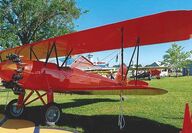
Lloyd Stearman started with Matty Laird in Chicago, moved to Wichita, and later worked with Walter Beech and Clyde Cessna at Travel Air. In 1926, he set up Stearman Aircraft Company in Venice, CA, returning to Wichita in 1927. His company produced practical biplanes for sport, passengers, mail, and training. The classic C-3B, certified under Approved Type Certificate #55 of July 1928, appeared with a 220 hp Wright J-5 Whirlwind nine-cylinder radial. A three seater, it had the traditional welded... Full story
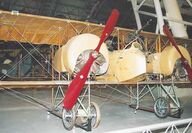
Rene and Gaston Caudron were inspired by seeing Wilber Wright fly. Their first aircraft flew from their farm on 21 September 1909. Caudron designed and constructed aircraft for civilian and military use until the end of World War II when the company disappeared. One of their most exciting aircraft was the C. 460 racer that appeared in the 1935 National Air Races flown by Michel Detroyat, winning the Greve and Thompson Trophies against U.S. competitors. This photo, taken at the NASM's Steven F.... Full story
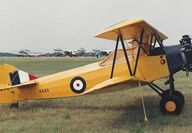
Major Reuben Hollis Fleet, U.S. Military Aviator No. 74, founded Consolidated Aircraft Corporation in May 1923. Fleet believed in making aircraft simple and safe, and produced a series of training biplanes for military and civilian use. On 25 March 1930, he formed a subsidiary company, Fleet Aircraft of Canada at Fort Erie, Ontario. Later, as Fleet Aircraft, Limited, Fleet produced two seat radial engined biplanes for the Royal Canadian Air Force and for export. Most, like the Model 2 and the... Full story
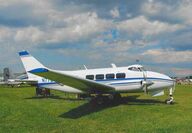
Jack Riley formed Riley Aircraft Corporation in 1952 to improve the performance of existing production aircraft. He converted the North American/Ryan Navion to twin engines, later selling the conversion rights to Temco, followed that with upgrading Cessna's 310 series as the Riley Rocket, and continued with conversions of Cessna 314, 340, 414, and 421 twins. In 1963 he upgraded the de Havilland DH. 104 Dove, originally first flown in September 1945, to the Riley Turbo Executive. A major conversi... Full story
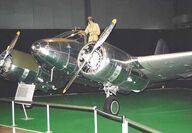
Army Air Force pilot training initially involved three levels: Primary, Basic, and Advanced (single engine and multi-engine). Advanced training was a ten-week course devoting 60 hours to ground school, 19 hours to "military" training, and 70 hours to flight time. Twin engine training used the Cessna Bobcat, Curtiss Jeep, the Twin Beech, and the Beech AT-10 Wichita. The AT-10, or Model 26, designed by a team led by T. A. Wells, trained over half of the Army's multi-engined pilots. Although Beech... Full story
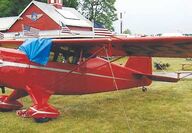
Designed by Doug Webber and Noel Hockaday, the two seat Model 6000 Speedster was delayed in production due to not being able to meet government spin regulations. The first two Speedsters, including NC15865 in this photo, were powered by a 95 hp four cylinder inverted A.C.E. Cirrus Hi-Drive air cooled engine. Cirrus engines, produced in Marysville, Michigan, from 1928 to 1935, were used mostly as power for the Fairchild 22 and Great Lakes Trainers. When the company folded, Menasco picked up the... Full story
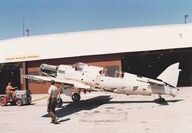
Richard Fairey began as a maker of flying model airplanes. By July 1915, Fairey Aviation Co. began construction of license built Short biplanes. From then on, Fairey was known for design and manufacture of aircraft mainly for the Royal Navy. Famous designs included the Fairey IIIF, the Flycatcher fighter, and the WWII Swordfish and Albacore torpedo bombers. The RN's first eight gun fighter was the Merlin powered two-seat Fairey Fulmar of 1940. Although large and slow, it did well in the... Full story
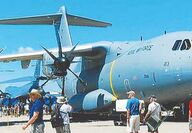
Airbus, known for its flyby wire airliners, including the popular A320 series and the gigantic A380, also produces military aircraft. The A400M Atlas turboprop transport was designed to replace the Transall C-160 and the early model Lockheed Hercules. Able to use undeveloped landing strips and capable of aerial refueling, the Atlas has suffered from development delays and cost overruns. Some countries cancelled orders for the Atlas. The prototype's delayed first flight occurred on 11 December... Full story
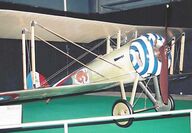
Edouard Nieuport (later changed to Nieuport) began building high speed monoplanes in June 1910. He was killed on 15 September 1911 and Henri Deutsche de la Meurthe with Gustave Delage as designer continued the name, but moved to building a series of over 10,000 V-strut sesquiplanes with rotary engines that became the backbone of French and Allied fighter squadrons. Delage broke the pattern in June 1917 with the Nieuport 28. It used untapered wings, twin Vickers guns, and a circular section... Full story
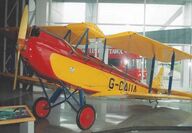
The prototype Moth, G-EBKT, was first flown by Geoffrey de Havilland at Stag Lane on 22 February 1925, powered by a Halford designed Cirrus I engine of 60 hp. The name Moth was bestowed on the two-seater biplane in reference to de Havilland's reputation as a lepidopterist. Over its production life, the DH-60 was powered by Cirrus inlines of 60-90 hp, the 75 hp Genet radial, DH Gipsy inlines of 100 to 120 hp, and the 130 hp Gipsy Major inline. Aircraft were manufactured for civilian and military... Full story
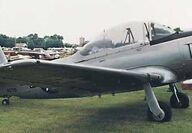
Designed by Armand Thielblot to an April 1945 US Navy specification for a new primary trainer, the XNQ-1 mockup was inspected in September 1945. Construction of three, two to fly and one for static testing, was authorized by the Navy. The prototype, Bu-75725, was first flown by Richard Henson on 7 October 1946, at Hagerstown, Maryland. It was joined in the test program by Bu-75726 in February 1947. Testing by Navy and Air Force pilots garnered good reviews. The Air Force gave it the designation... Full story
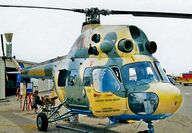
Dr. Mikhail Leontyvich Mil (1909-1970) began his career working on autogiros with another noted Russian rotary wing pioneer, Nikolai Ilyich Kamov (1902-1973). During WWII, Mil was assigned to a Red Air Force autogiro unit. In 1947, he formed his own design bureau to pursue rotary wing research. His first helicopter, the Mi-1 "Hare" with an Ivchenko piston engine was completed in September 1948 and was produced for Aeroflot and the Soviet Air Force for passengers, crop spraying, and med evac.... Full story
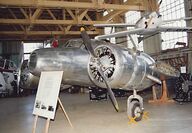
Archibald Barkley began his career working with the Wright brothers and with pioneering companies Verville, Stout, Ford, and Curtiss. Teaming up with Harold Grow in 1936, they established the Barkley-Grow Aviation Corporation in Detroit. Their main product, with its patented multi-spar all metal wing, was the T8P-1, a twin engine, twin tailed airliner, which first flew in April 1937 piloted by Frank Cordova. Test flying was done by noted air racing pilot Lee Gehlbach. The T8P-1 was awarded Appro... Full story
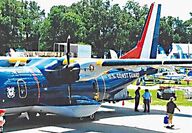
CASA or Construcciones Aeronauticas SA was formed in 1923 and became Spain's main aircraft company. It license-built aircraft from Dornier, Breguet, Vickers, Bucker, Heinkel, and Northrop in addition to producing aircraft of its own design. In 1980, it joined with Indonesia's IPTN to create Airtech for production of the CN-235 turboprop transport. Appealing to the military for its load carrying ability, excellent short field operations, and being adaptable to the maritime recon role, the... Full story
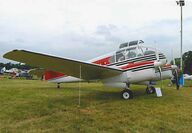
The Czech Aero company got its start in 1919 manufacturing the Austria- Hungarian designed twin gun Phoenix fighter under license. Later, it produced its own designs for civil transports, fight- ers, and bombers. After World War II, the reformed Aero began production of a family of light transports, beginning with the Aero 45 of 1947. Designed by Jiri Bouzek, Ondrej Nemec, and Frantisek Vik, the prototype Aero 45 flew on 21 July 1947, the first Czech designed aircraft to be produced after... Full story
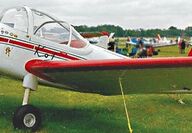
PZL or Panstwowe Zaklady Lotnicze was established in January 1928 to be Poland's main aircraft design and manufacturing concern. Known in the early 1930's for a series of parasol wing monoplane fighters designed by Zygmunt Pulaski, PZL went on to produce one of the finest twin engine bombers of the pre-WWII era. The PZL 37 Los (Elk) had excellent performance and, had the war not intervened, would have been exported to a number of countries. After the German blitzkrieg, what was left of PZL was... Full story